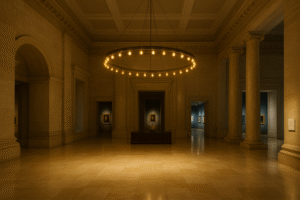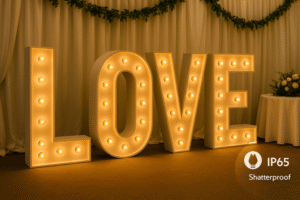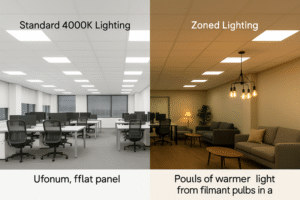Are you confused by endless technical datasheets? Choosing the wrong specs can lead to a shipment of unsellable bulbs, unhappy customers, and wasted investment. It's a high-stakes decision.
Focus on the core specifications that match your target market. Select the correct base (E12 for North America, E14 for Europe), the right light quality (lumens, CCT, CRI), and the proper electricals (voltage, dimming). These details determine product success.
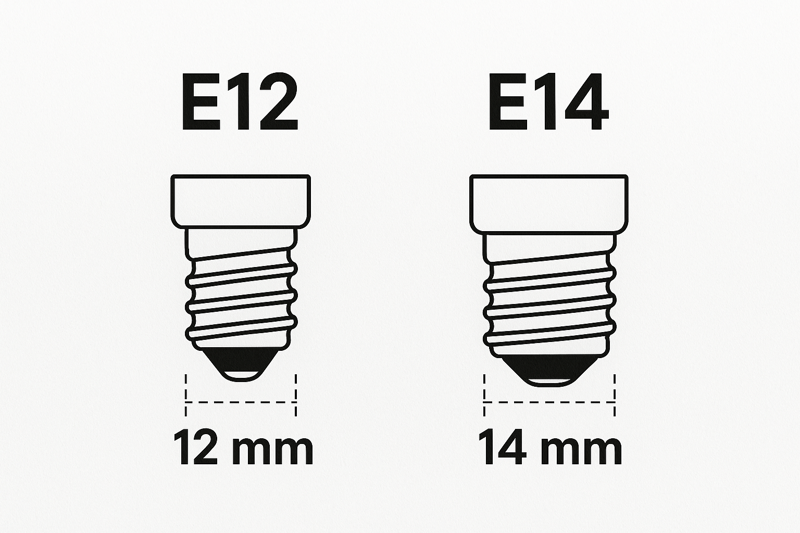
Understanding technical specifications is the foundation of being a successful product manager or buyer in the lighting industry. It's a conversation I have daily with clients from the US, UK, and the Netherlands. They don't just want a bulb; they want the right bulb for their customers. I remember an early conversation with a new buyer, who was focused entirely on getting the lowest price. He sent me a spec sheet for what seemed like a standard bulb. But I noticed a small detail—he had specified E14 bases for an order destined for the United States. That single mistake would have made his entire inventory useless. It’s my job, and the job of any good manufacturing partner, to not only build what you ask for but to also be a second set of eyes, using our experience to help you avoid costly errors. Let's break down these crucial specifications so you can order with complete confidence.
What is the real difference between an E12 and E14 base?
Are you worried about ordering the wrong base size for your market? It’s a simple mistake that can make an entire shipment worthless, causing massive financial loss and logistical nightmares.
The difference is geography and size. The E12 base, or "Candelabra" base, has a 12mm diameter and is the standard for North America. The E14 base, or "Small Edison Screw," has a 14mm diameter and is standard in Europe and other 220-240V regions.
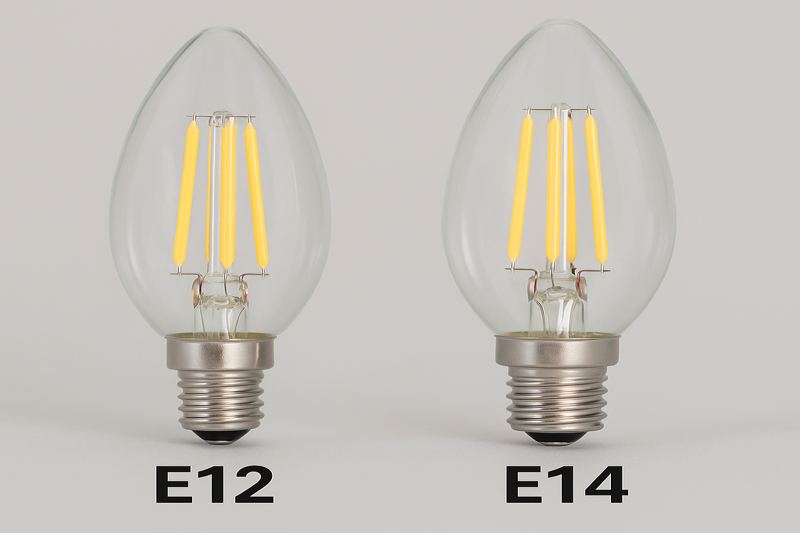
This seems like a small detail, but it is the most fundamental specification of all. Choosing the wrong one is an instant failure. I once worked with a product manager who was launching a new line of chandeliers imported from Italy into the US market. The chandeliers were beautiful, but they all came with E14 sockets. He was in a panic. His company had to decide whether to undergo the massive expense of rewiring every fixture or find a reliable supply of E14 bulbs in a market that almost exclusively uses E12. This experience taught him (and me) a valuable lesson: the base isn't just a component; it defines the market. Understanding this distinction is the absolute first step in sourcing candelabra bulbs correctly.
The Americas: E12 Candelabra Base
This is the standard you'll find across the United States, Canada, and Mexico.
- Name: It's almost always referred to as the E12, or "Candelabra" base. The "E" stands for Edison, and the "12" refers to the 12-millimeter diameter of the screw threads.
- Voltage: It is almost universally paired with the North American standard voltage of 120V AC. Sourcing an E121 bulb with 220V compatibility is a niche request and must be specified clearly.
- Application: It's the go-to base for decorative lighting like chandeliers, wall sconces, and ornamental lamps in the North American market. If your target customer is like Jacky in America, E12 is what you need.
Europe and Beyond: E14 Small Edison Screw2 (SES)
This is the dominant standard in the United Kingdom, all across Europe, Australia, and many other countries that use a 220-240V electrical system.
- Name: Known as E14 or "Small Edison Screw" (SES). The diameter is 14 millimeters.
- Voltage: It is designed for the 220-240V AC3 electrical grids found in these regions. You should never try to use a standard 120V E12 bulb in an E14 socket with a simple adapter, as the voltage difference will destroy the bulb instantly.
- Application: Just like the E12, it is used for the same types of decorative fixtures—chandeliers, sconces, etc.—but for a different electrical ecosystem.
Here is a simple table to make the distinction clear:
| Specification | E12 Base | E14 Base |
|---|---|---|
| Common Name | Candelabra | Small Edison Screw (SES) |
| Diameter | 12 millimeters | 14 millimeters |
| Primary Region | North America (USA, Canada, Mexico) | Europe (UK, Germany, etc.), Australia |
| Standard Voltage | 120V AC4 | 220-240V AC |
| Key Takeaway | Order this for the US Market. | Order this for the UK/EU Market. |
As a buyer, you must be absolutely certain about the destination market for your products. At Hongyu Bulb, we always confirm the base and destination country with our clients before starting production. It's a simple check that prevents a catastrophic mistake.
How do lumens, CCT, and CRI affect the final user experience?
Do you find the terms for light quality confusing? Choosing the wrong combination of lumens, CCT, and CRI can result in bulbs that are too dim, the wrong color, or make interiors look dull.
Lumens dictate brightness, CCT sets the color from warm to cool, and CRI measures color accuracy. A premium user experience comes from a high-CRI (90+) bulb with the right brightness and a consistent, appealing color temperature.
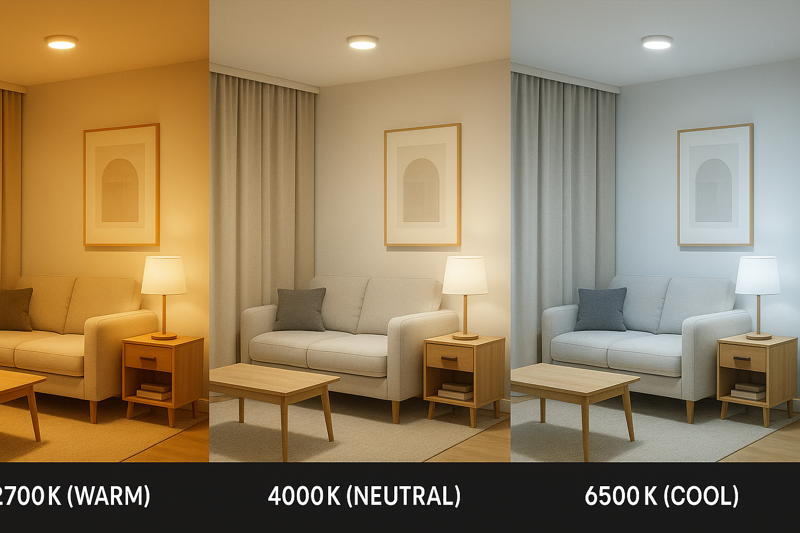
These three specifications are the soul of the light bulb. They determine how a room feels and how objects within it look. Getting them right is the difference between a satisfied customer and a product review that says, "The light from these bulbs just feels... off." I often walk clients through this by asking them to picture the end-use. Is the bulb for a cozy restaurant dining room or a modern, bright bathroom vanity? The answer to that question immediately tells us what kind of light quality we need to produce. This isn't just about manufacturing a light source; it's about crafting an ambiance.
Lumens: The Measure of Brightness
Forget watts. In the age of LED, lumens are the only true measure of how bright a bulb is.
- What it is: Lumens (lm) measure the total quantity of visible light emitted by a source. The higher the lumen count, the brighter the light.
- The Incandescent Equivalence: Your customers still think in watts. It's crucial to provide a familiar reference point. As a rule of thumb, a 40W incandescent candelabra bulb is roughly equivalent to a 450-lumen LED, and a 60W is about 800 lumens. Clearly marking this "wattage equivalent" on your packaging is essential for sales.
This determines whether the light appears warm and yellow or cool and blue.
- What it is: Measured in Kelvin (K), CCT describes the color appearance of the light.
- Common CCTs and Their Feel:
- 2700K (Warm White): This is the classic, cozy, yellowish glow of a traditional incandescent bulb. It's perfect for living rooms, bedrooms, and restaurants to create a relaxing atmosphere.
- 3000K (Soft White): A slightly crisper, less yellow warm light. It's a versatile choice for kitchens and bathrooms where you want warmth but also a bit more clarity.
- 4000K (Cool White): A neutral, white light that appears modern and clean. It’s often used in commercial or retail spaces and some modern kitchens.
- 5000K+ (Daylight): An intense, bluish-white light that mimics noon daylight. Often used for task lighting, garages, and security floodlights, but less common for decorative candelabra bulbs.
Lumens: The Measure of Brightness
Forget watts. In the age of LED, lumens are the only true measure of how bright a bulb is.
- What it is: Lumens (lm) measure the total quantity of visible light emitted by a source. The higher the lumen count, the brighter the light.
- The Incandescent Equivalence: Your customers still think in watts. It's crucial to provide a familiar reference point. As a rule of thumb, a 40W incandescent candelabra bulb is roughly equivalent to a 450-lumen LED, and a 60W is about 800 lumens. Clearly marking this "wattage equivalent5" on your packaging is essential for sales.
This determines whether the light appears warm and yellow or cool and blue.
- What it is: Measured in Kelvin (K)7, CCT describes the color appearance of the light.
- Common CCTs and Their Feel:
- 2700K (Warm White): This is the classic, cozy, yellowish glow of a traditional incandescent bulb. It's perfect for living rooms, bedrooms, and restaurants to create a relaxing atmosphere.
- 3000K (Soft White): A slightly crisper, less yellow warm light. It's a versatile choice for kitchens and bathrooms where you want warmth but also a bit more clarity.
- 4000K (Cool White): A neutral, white light that appears modern and clean. It’s often used in commercial or retail spaces and some modern kitchens.
- 5000K+ (Daylight): An intense, bluish-white light that mimics noon daylight. Often used for task lighting, garages, and security floodlights, but less common for decorative candelabra bulbs.
CRI (Color Rendering Index)8: The Quality of the Color
This is arguably the most important spec for high-end applications and one often overlooked by buyers focused on price.
- What it is: CRI is a scale from 0 to 100 that measures how accurately a light source reveals the true colors of objects compared to a natural light source (like the sun).
- Why It Matters: A low CRI (around 80, which is standard) can make colors look washed out or "muddy." A high CRI (90+) makes everything look vibrant and rich. Reds look redder, blues look bluer. For lighting in a dining room, a living room with art, or a high-end retail display, a high CRI is a massive selling point and a clear differentiator. At Hongyu Bulb, we have invested in the technology to produce cost-effective, high-CRI 90+ LED filaments because we know it's a feature that discerning customers value.
Here's how these elements work together:
| Specification | Technical Measurement | User Experience Impact | Best For... |
|---|---|---|---|
| Lumens9 | 450 lm | Brightness of a 40W bulb | General decorative lighting |
| CCT | 2700K | Creates a warm, cozy feeling | Restaurants, living rooms, bedrooms |
| CRI | 90+ | Makes decor, food, and skin tones look vibrant and true | High-end residential, hospitality, retail |
By mastering this trio of specifications, you can offer a product that doesn't just illuminate a space but actually enhances it.
Why are voltage and dimming compatibility so critical for your market?
Are you concerned about technical complaints and product returns? Mismatched voltage will instantly destroy a bulb, and poor dimming performance is one of the most common reasons for customer dissatisfaction and negative online reviews.
Correct voltage (120V for North America, 220-240V for Europe) is essential for basic function and safety. Smooth, flicker-free dimming compatibility with common dimmer switches is a premium feature that prevents returns and builds brand loyalty.
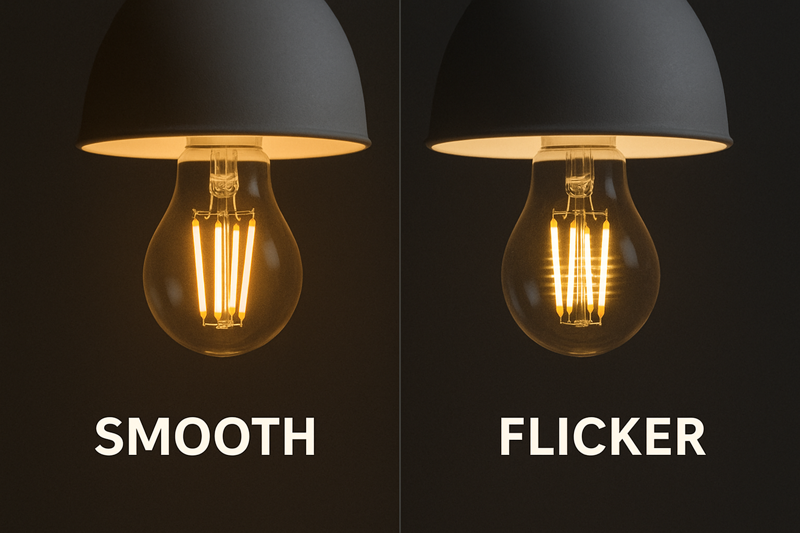
The electrical specifications are where the science of lighting meets the reality of a customer's home. A bulb can look beautiful and have perfect color, but if it flickers, buzzes, or blows out the moment it's installed, it's a complete failure. As a manufacturer, this is an area where we focus heavily. The quality of the internal driver—the small electronic component that converts AC voltage to the DC needed by the LEDs—is everything. This is not a place to cut costs. A few cents saved on a cheap driver will be erased many times over by the cost of handling one product return.
Voltage: The Make-or-Break Specification
As we discussed with the E12/E14 base, voltage is inextricably linked to geography.
- 120V AC: The standard for the US, Canada, and Mexico. All your E12 base bulbs should be specified for this voltage.
- 220-240V AC: The standard for the UK, Europe, Australia, and many other parts of the world. All your E14 base bulbs should be specified for this range.
- Multi-Voltage Drivers10: Some manufacturers offer wide-range voltage drivers (e.g., 100-240V). While these can be useful for some global products, they are often more expensive and less common for decorative bulbs. It's usually more cost-effective and reliable to source the specific voltage required for your target market. Mis-matching voltage is not just a performance issue; it's a safety hazard.
Dimming: The Source of Frustration or Delight
In decorative lighting, dimming is not an optional feature; it's an expectation. Customers want to control the ambiance of their space.
- The Problem: The rise of LEDs created a challenge. Older dimmer switches in homes were designed for the simple resistive load of an incandescent bulb. The complex electronics of an LED bulb can conflict with these older dimmers, leading to common problems like flickering at low light levels, an audible buzz from the bulb, or a "dead zone" where the bulb doesn't respond to the dimmer control.
- The Solution: High-Compatibility Drivers11: The key to good performance is a high-quality driver inside the bulb. We work with top-tier driver component suppliers and rigorously test our bulbs with a wide range of common dimmer switches from major brands (like Lutron and Leviton for the US market). This ensures a high degree of compatibility.
- What to Look For: When you source a dimmable bulb, you should ask the supplier for a list of compatible dimmers. A good manufacturer will have this data. Promoting your bulb as "Flicker-Free12" and "Silent Dimming" is a powerful marketing message.
Here's a checklist for electrical specifications:
| Electrical Spec | Key Question for Supplier | Why It's Critical |
|---|---|---|
| Voltage | "Is this bulb rated for 120V or 220-240V?" | Ensures basic function and safety. Prevents immediate burnout. |
| Dimmability13 | "Is this bulb dimmable? What is the dimming range (e.g., 10%-100%)?" | Meets customer expectations for mood lighting in decorative fixtures. |
| Dimmer Compatibility | "Can you provide a list of compatible dimmer switches?" | Prevents the most common complaints (flickering, buzzing) and reduces returns. |
Getting the electricals right is about delivering on a fundamental promise to the customer: that the product will work safely and reliably in their home.
Do bulb shape, size, and material truly matter for performance and sales?
Do you think all candelabra bulbs look the same? The subtle differences in shape, the clarity of the glass, and overall dimensions can significantly impact whether the bulb fits a fixture and meets customer aesthetic expectations.
Absolutely. The shape (e.g., torpedo B10 vs. flame tip C35) defines the style. The material (glass vs. plastic) affects clarity and heat dissipation. The dimensions (Maximum Overall Length and Diameter) determine if it will physically fit into tight sconces or enclosed fixtures.
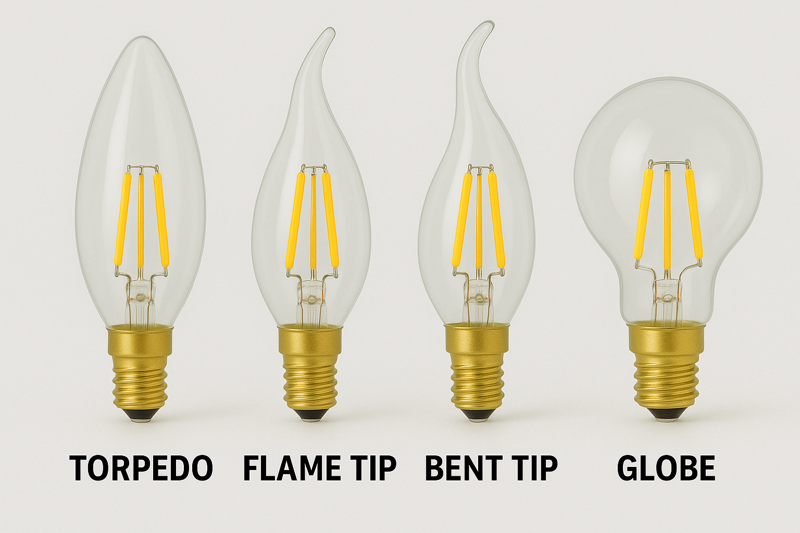
After you have locked in the technical and electrical specs, the final piece of the puzzle is the physical form of the bulb. This is about aesthetics and fit. A customer buying bulbs for an antique crystal chandelier will have very different visual expectations than someone buying for a modern, minimalist sconce. As a buyer, you need to offer the right shapes and sizes to match the fixtures your customers own. I've seen situations where a bulb was technically perfect but was half an inch too long to fit inside a glass-enclosed fixture, leading to a return. These physical details matter immensely.
Bulb Shape and Designation
The shape of the bulb is identified by a letter and a number. The letter denotes the shape, and the number represents the maximum diameter in eighths of an inch.
- B10 / B11 (Torpedo/Bullet): This is the classic, smooth, cone-like shape. It's a versatile, common choice for a wide range of fixtures.
- C35 / F15 (Flame Tip): This shape mimics the look of a candle flame. It can be a straight, conical "flame" (C35) or have a decorative bent tip. This style is extremely popular for traditional and ornate chandeliers where the bulbs are exposed.
- CA (Flame Bent-Tip): A variation of the flame shape with a decorative curve at the tip, designed to look even more like a flickering candle flame.
Materials: Glass vs. Plastic
The material of the bulb "envelope" or shell impacts both look and performance.
- Glass: This is the premium choice. It offers superior optical clarity, doesn't yellow over time, and gives the bulb the authentic look and feel of a traditional incandescent. It also helps dissipate heat effectively. All our Hongyu Bulb filament products use high-quality, clear glass for this reason.
- Plastic (Polycarbonate): This is a cheaper, more shatter-resistant option. However, it can sometimes lack the crystal-clear look of glass, may have a slight haze, and can be more prone to yellowing over time with heat exposure. It's often seen as a lower-quality choice for decorative bulbs.
Dimensions: Will It Fit?
This is a practical detail that is often overlooked.
- MOL (Maximum Overall Length): This is the total length of the bulb from the top of the glass to the bottom of the screw base.
- MOD (Maximum Overall Diameter): This is the width of the bulb at its widest point.
- Why It's Critical: Many decorative fixtures, like wall sconces or some enclosed ceiling lights, have very tight space constraints. You must ensure the dimensions of your bulb will fit. Providing clear dimensional diagrams on your product page and packaging can save your customers a lot of frustration and prevent returns.
Here's a breakdown of physical attributes:
| Attribute | Common Options | Impact on Sales / Performance |
|---|---|---|
| Shape | Torpedo (B10), Straight Flame (C35), Bent-Tip Flame (CA) | Directly impacts aesthetic appeal and matches different fixture styles. |
| Material | Glass, Plastic | Glass offers superior clarity and a premium feel. Plastic is cheaper but less desirable. |
| Dimensions | MOL and MOD | Determines whether the bulb will physically fit into the customer's light fixture. |
These physical specifications are the final touchpoint, ensuring the product you've so carefully engineered also looks the part and works in the real world.
Conclusion
Choosing the right E12/E14 bulb requires a mastery of specifications—from the base and voltage for your market to the subtle nuances of light quality that create the perfect ambiance.
Explore this link to understand the applications and specifications of the E12 base, crucial for decorative lighting. ↩
Discover the unique characteristics of the E14 base, essential for choosing the right lighting fixtures in Europe. ↩
Understand the importance of 220-240V AC in global electrical systems, especially in Europe and Australia. ↩
Learn about 120V AC, its applications, and why it's important for North American electrical systems. ↩
Learn about wattage equivalents to make informed decisions when transitioning from incandescent to LED. ↩
Explore CCT to learn how color temperature affects ambiance and mood in different environments. ↩
Understanding Kelvin helps you choose the right color temperature for your lighting needs. ↩
Discover why CRI is crucial for accurate color representation and how it impacts your lighting choices. ↩
Understanding lumens is essential for choosing the right brightness for your space, enhancing your lighting decisions. ↩
Explore this link to understand how Multi-Voltage Drivers can enhance your lighting solutions and ensure compatibility across different regions. ↩
Learn about High-Compatibility Drivers to ensure your LED bulbs perform well with various dimmer switches, enhancing customer satisfaction. ↩
Discover the importance of Flicker-Free technology in LED lighting and how it can improve the user experience in decorative settings. ↩
Understand the significance of dimmability in lighting design and how it meets customer expectations for ambiance control. ↩





